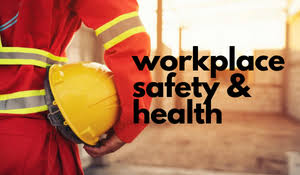In today’s fast-paced and demanding work environments, the focus on workplace safety has primarily revolved around physical hazards and risks.
However, there is a silent epidemic that often goes unnoticed but has a significant impact on employee well-being and overall workplace safety – mental health. The alarming rise in stress, anxiety, depression, and other mental health issues among employees necessitates a deeper understanding of the link between mental health and workplace safety.
Mental Health and Productivity
Numerous studies have highlighted the strong correlation between mental health and workplace productivity. When employees experience mental health challenges, their ability to concentrate, make decisions, and effectively perform their job tasks is compromised. This decline in productivity can have severe consequences, leading to errors, accidents, and an overall decline in workplace safety.
Stress and its Consequences
Stress, one of the most common mental health issues faced by employees, can have far-reaching implications for workplace safety. High levels of stress can impair cognitive function and decision-making abilities, increasing the likelihood of accidents or errors. Additionally, chronic stress can contribute to fatigue and exhaustion, reducing employees’ alertness and increasing the risk of workplace injuries.
Depression and Anxiety: Hidden Dangers
Depression and anxiety are prevalent mental health disorders that affect millions of individuals worldwide. In the workplace, these conditions often go unnoticed or are stigmatized, hindering proper support and treatment. However, their impact on workplace safety is significant. Individuals suffering from depression may experience decreased motivation, concentration difficulties, and even suicidal thoughts, jeopardizing their ability to carry out tasks safely. Anxiety disorders, on the other hand, can heighten stress responses and impair judgment, leading to poor decision-making and increased risks.
Psychological Factors and Occupational Accidents
A crucial aspect of workplace safety is the understanding of psychological factors that contribute to occupational accidents. Emotional distress, burnout, and poor mental well-being can diminish an employee’s situational awareness, compromising their ability to detect and respond to potential hazards. Additionally, employees experiencing mental health challenges may be more prone to engaging in risky behaviors or substance abuse, further escalating the risk of accidents in the workplace.
Creating a Mentally Healthy Workplace
Addressing mental health concerns in the workplace is not only an ethical imperative but also crucial for ensuring overall safety. Organizations can take proactive measures to promote mental well-being and improve workplace safety:
- Cultivate a supportive culture: Foster an environment that encourages open communication, empathy, and destigmatization of mental health issues. Promote a culture where employees feel comfortable seeking support and resources.
-
Training and education: Provide comprehensive training programs that raise awareness about mental health, stress management, and resilience-building techniques. Equip employees with the knowledge and skills to recognize signs of mental distress in themselves and their colleagues.
-
Employee assistance programs: Implement confidential counseling services and employee assistance programs that offer professional support and resources for mental health challenges. These programs can play a crucial role in early intervention and providing necessary guidance to employees in need.
-
Work-life balance: Encourage work-life balance by promoting flexible work arrangements, promoting regular breaks, and fostering a supportive work environment that values employee well-being.
The impact of mental health on workplace safety is a pressing concern that demands attention from employers, managers, and policymakers. By recognizing the connection between mental health and workplace safety, organizations can take proactive steps to create a culture that supports and prioritizes employee well-being.
By investing in mental health initiatives, organizations not only protect their employees but also enhance productivity, reduce absenteeism, and foster a positive work environment.
It is imperative to break the silence surrounding mental health and forge a path towards a safer, healthier, and more productive workplace for all.




